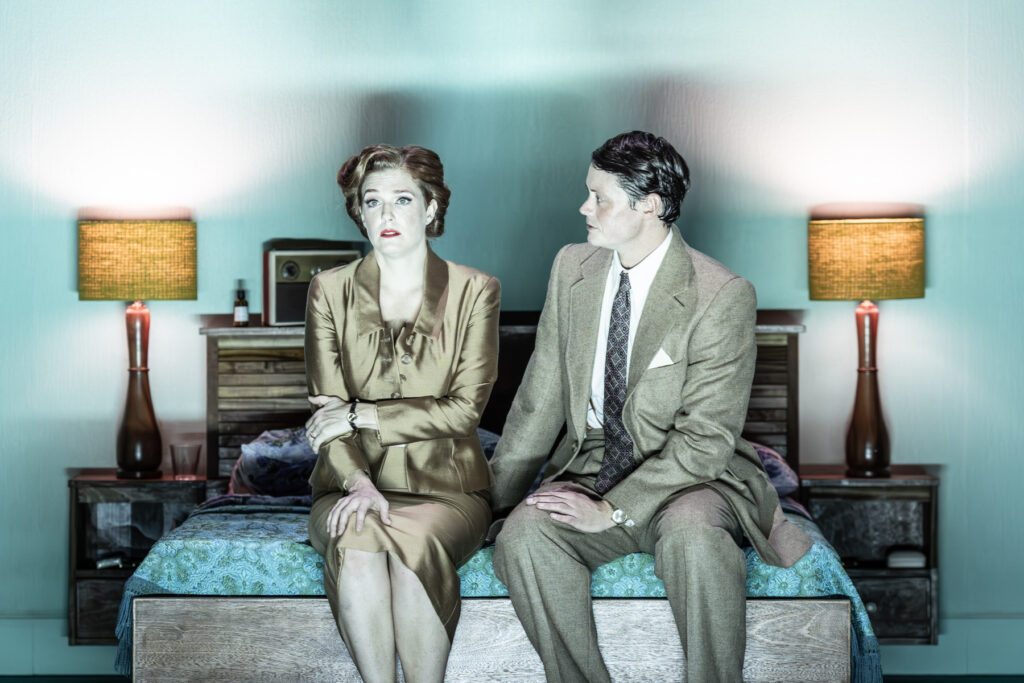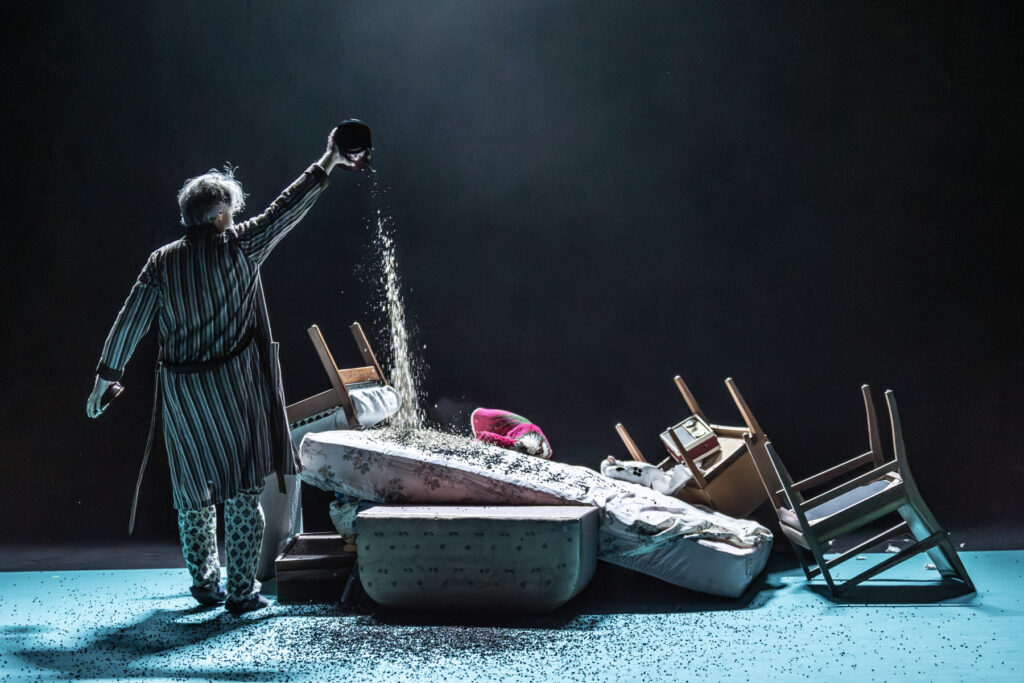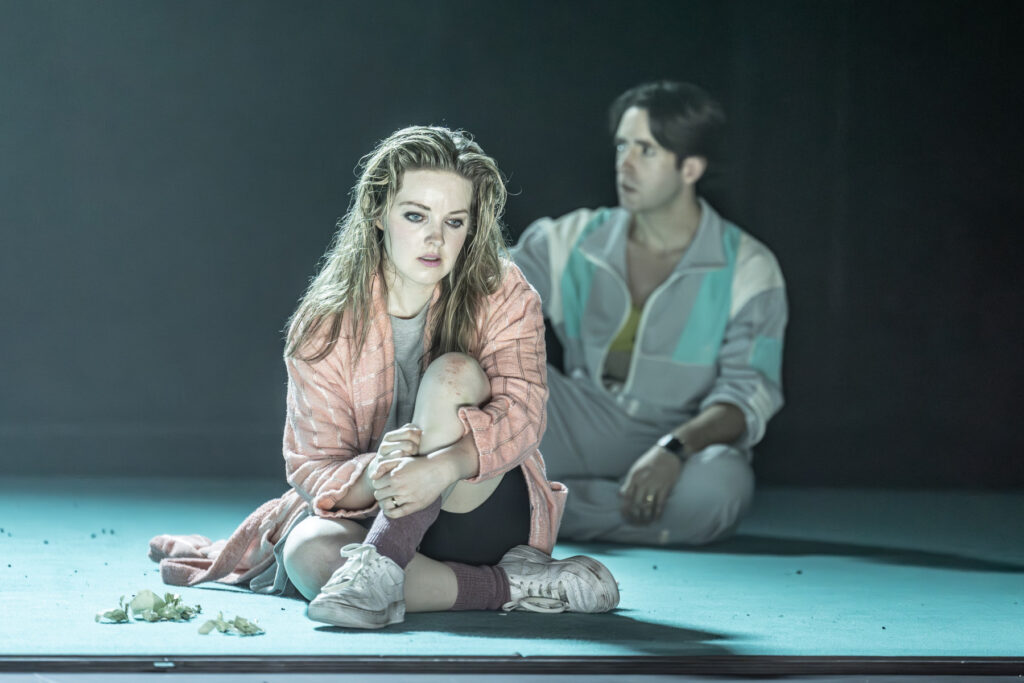Bernstein’s Trouble in Tahiti (1952) and A Quiet Place (1983) provide a fascinating glimpse of his stylistic development across some thirty years, seen through the lives of a dysfunctional family. Both works allow insights into his own complicated marital life and hold up a mirror to American life in the second half of the last century. No matter that Bernstein’s inspiration is uneven, these new productions are in the safe hands of director Oliver Mears, whose cast deliver sharply defined portraits, that are musically and dramatically superb. So involving are the performances that one might almost ignore the rows and recriminations belonging to A Quiet Place, its ‘conversation in music’ arguably suffocating its dramatic curve. Why the composer didn’t excise one or two overlong passages, even after its revision,remains a mystery.

At just forty-five minutes, Trouble in Tahiti is a more compact affair. Framed over a single day, this one-acter outlines the stultified lives of Sam and Dinah who bicker over accusations of an extra marital affair and argue over why their son Junior’s school play will be missed. Later, a therapist will be consulted, business deals secured, and Sam’s concerns thrashed out at the gym. Dinah sees part of a second-rate film, Trouble in Tahiti, and then watches the same movie again with her husband, a token gesture of harmony but more a symptom of domestic futility. As if imitating their empty lives, Annemarie Woods’s set is the last word in economy: a double bed, an office chair and a punchbag conveys all that’s needed, each scene differentiated by split stage lighting courtesy of Fabiana Piccioli. Sam’s preoccupation with his body image (and manhood) is neatly suggested by shadows in the shower, while a group of umbrella-wielding extras hurry across the stage before pausing to form a tableau, an effect bringing to mind the alienation within one of Edward Hopper’s art works. Nighthawks was conceived in 1942.

Added to these images (and wonderful period costumes) are characterful performances from Wallis Giunta as Dinah who sings with an easy clarity and throws herself whole heartedly into ‘Island Magic’ whilst capering around in a frenzy of rage and frustration, yet also yearning for inner peace. She is well matched by Henry Neill’s ample baritone as Sam, his finest moment while sparring with a punchbag. Above them a vocal trio in suits and shades (think Greek chorus) add their own catchy harmonies. If not entirely pitch perfect on opening night, the advertising parodies they sing brought out the glitzy consumerism of the era.

Fast forward thirty years for the sequel A Quite Place beginning with an older Sam (Grant Doyle) struggling to come to terms with the death of his wife following a car crash. The music’s angularities mirror the tormented lives of his trauma and his two grown-up children: a mentally disturbed and gay Junior (Henry Neill) and his younger sister Dede (Rowan Pierce) whose husband Francois (Elgan Llŷr Thomas) is Junior’s ex-lover. He gives a masterclass in unease as he attempts to find a place in his wife’s family. Junior’s instability and vulnerability is brilliantly captured by Neill, his emotional pain heart-wrenching as he craves the love of his distant father. No less believable is Pierce whose beautifully sung Dede brings eventual healing to old wounds. Elsewhere, there’s a ragbag of disagreeable ‘friends’ and associates you would never want as neighbours. Of these, there’s the intimidating Mrs Doc (a formidable Sarah Pring), the no nonsense Analyst (Robin Bailey) and the placating Susie (Rebecca Afonwy-Jones). Nick Pritchard is a good fit as the hapless Funeral Director.

As before, a handful of props create their own story with everything set in motion by the arresting sounds of a heavily amplified car crash. Next is a funeral parlour indicated by a row of chairs and a coffin on which flowers adorn the word WIFE. Only after Dinah’s personal possessions are built as a pyre do any signs of family understanding take root, and the first fruits of reconciliation begin as we are reminded of Dinah’s appeal “We are only who we are: accept it. Accept and live”.
These sovereign performances, aided and abetted by some snappy playing from the Royal Opera House Orchestra under Nicholas Chalmers, do not, however, disguise the work’s weaknesses nor compensate for the assault and battery on the ears in ensemble routines. That said, this is an impressive achievement, and well worth catching before it ends on 21st October.
David Truslove
Trouble in Tahiti
Music & Libretto: Leonard Bernstein
Reduced Orchestration: Garth Edwin Sunderland
Cast:
Sam – Henry Neill; Dinah Wallis Giunta; Trio – Peter Edge, Guy Elliot, Kirsty McLean
A Quiet Place
Music: Leonard Bernstein
Libretto: Stephen Wadsworth
Libretto and orchestration adaption: Garth Edwin Sunderland
Cast:
Sam – Grant Doyle; Dede – Rowan Pierce; Junior – Henry Neill; François– Elgan Llŷr Thomas; Funeral Director – Nick Pritchard; Mrs Doc – Sarah Pring; Doc – Freddie Tong; Bill – Eddie Wade; Susie – Rebecca Afonwy-Jones; Analyst – Robin Bailey; Quartet – Peter Edge, Guy Elliot, Heather Lowe, Kirsty McLean
Production credits:
Director – Oliver Mears; Sets and Costumes – Annemarie Woods; Lighting – Fabiana Piccioli; Movement – Sarah Fahie; Fight Director – Bret Yount’ Sound designer – Florence Hand; Intimacy Coordinator – Ruth Cooper Brown; Orchestra of the Royal Opera House’ Conductor – Nicholas Chalmers
The Linbury theatre, Covent Garden, 10 October 2024
Top image: Scene from A Quiet Place
All photos by The Royal Opera ©2024 Marc Brenner